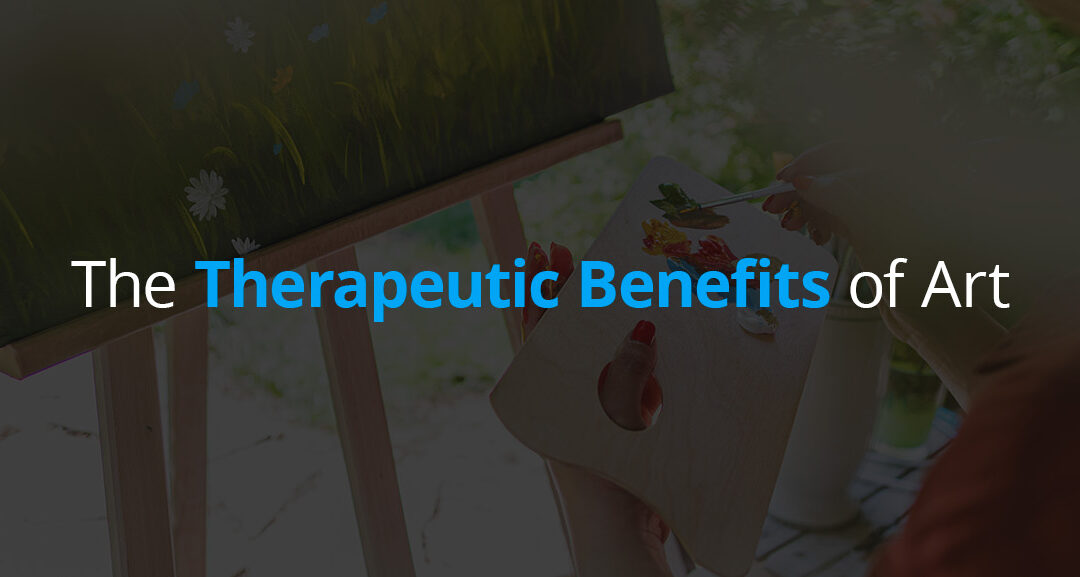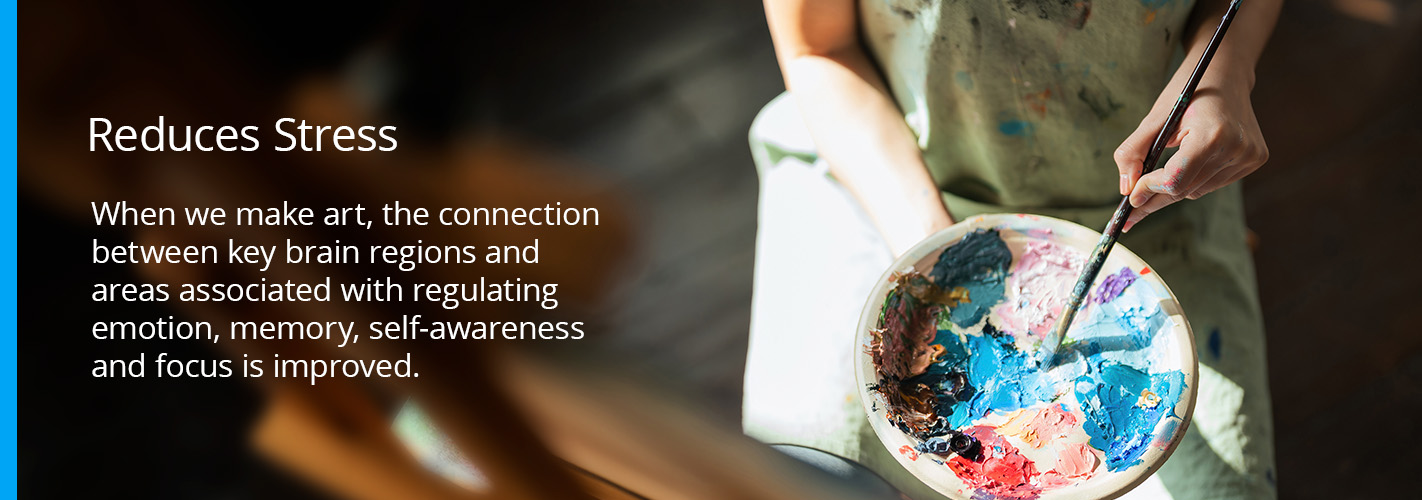What Is Art Therapy?
Art therapy is an effective therapeutic technique that encourages self-expression to foster healing. While anyone can make art in their own time and enjoy some of the benefits of being creative, art therapy occurs under the guidance of an art therapist. When paired with other psychotherapeutic techniques, such as cognitive behavioral therapy (CBT), art therapy can help patients of all ages improve their mental well-being.
Types of Art Therapy
Art is a broad term encompassing many different mediums. You can enjoy the benefits of art therapy via any of the following techniques.
Painting
Watercolors, acrylics, and oil paints are commonly used in art therapy. Whether creating realism, abstract, or contemporary pieces, painting is an exceptionally relaxing practice with a world of mental health benefits. This form of creativity can boost fine motor skills and improve concentration. While paint is one of the messier mediums to work with, the process of mixing paints to create unique color palettes is also incredibly therapeutic.
Drawing
Graphite and charcoal pencils are a lot less messy than paints, but the benefits of drawing and sketching are all the same. Drawing improves fine motor skills and helps release hidden emotions. The free-flowing approach to sketching and drawing encourages artists to let their imagination take the lead, which encourages self-exploration and the unearthing of thoughts and experiences that are unique to the artist.
Sculpting
Sculpting is an elegant form of art that’s enjoyed by people of all ages and from all walks of life. Making 3D objects from raw, malleable materials like wax and clay can induce a state of deep focus, even in those with little or no sculpting skills. As with painting and sketching, artists can develop and fine-tune their skills over time. Plus, as a hands-on medium, working with malleable materials like clay can strengthen tendons and muscles, improving dexterity.
Crafting
Crafting is another form of art therapy and a very popular hobby. Making things like decorative baskets, textile displays, fashion garments, and wall decor are just some of the crafts that people make during these kinds of creative sessions. Crafting is a fun alternative for anyone who doesn’t particularly enjoy painting and sketching. It can also improve dexterity by improving hand-eye coordination and strengthening muscles and tendons in the hands.
Beyond these visual art therapies, art therapists may also use expressive art forms like drama, dance, and music therapy.
Why Is Art Good for Mental Health?
Harnessing your imagination and creativity to make art can help you express and release emotions. Focusing on each brush stroke or pen line can lessen anxious and stressful thoughts, and finishing a piece of art will set off the brain’s reward system.
Whether painting unique emotive works, making crafty creations, or sculpting imaginative pieces, art therapy benefits mental health in the following valuable ways.
Reduces Stress
While the stress hormone cortisol has biological benefits, chronically high cortisol levels can lead to complicated symptoms. High-stress levels can increase the risk of stroke, heart attack, and high blood pressure. Even lower levels of unmanaged chronic stress can deplete mental wellness and cause depression, anxiety, insomnia, memory problems, and irritability.
When we make art, the connection between key brain regions and areas associated with regulating emotion, memory, self-awareness, and focus is improved. There are quite a few studies that show how art helps mental health. For example, according to the results of a Central Washington University study, the effects of coloring and mandala art can significantly reduce stress levels in most participants. Another study concluded that the vast majority of participants experienced notable stress reduction when creating art. Most participants also reported developing the desire to continue making art in the future.
Enhances Brain Functions
Another reason art is therapeutic involves how it affects cognitive functioning. Continued research findings in the field of neuroscience show that making art improves brain functions by positively impacting the nervous system, emotional processing, and brain waves.
While in a state of deep flow and relaxed focus, a series of conscious and unconscious processes in the brain go to work. Creating art feeds brain processes that support memory, decision-making, problem-solving, and other critical functions.
Because art can improve these cognitive functions, art therapy is commonly encouraged in treatments for dementia, post-traumatic stress disorder (PTSD), and substance use disorder.
Improves Symptoms of Depression and Anxiety
Research from Drexel University also found that when we engage in creativity in any form, even doodling, the pleasure centers in the brain light up, fueling dopamine and production. One of the primary reasons we experience depression is that there is not enough dopamine in the brain. This essential chemical is responsible for feelings of happiness. As a result, art can help depression symptoms by boosting dopamine levels.
Numerous surveys show participants can feel their mood lighten when they engage in creativity, which can help transform negative emotions into more positive ones.
Boosts Self-Esteem and Confidence
Aside from activating the brain’s reward system, reducing stress, and improving cognitive functions — including memory — creating art can also boost self-esteem. You don’t need to be a highly skilled or renowned artist to experience a bit of pride in your creations. Just as crossing a task off a to-do list can prompt a tiny dopamine boost, finishing an artwork can bring about a similar neurological process that boosts confidence and self-esteem.
Supports Trauma Recovery
Art therapies are also often used in trauma recovery treatment. The process of making art encourages self-expression, which can help trauma survivors process their emotions and experiences. Along with the benefits of boosting self-esteem and soothing symptoms of stress, anxiety, and depression, creating art can help people heal from past trauma.
Reach Out to Merrimack Valley Psychological Associates to Learn More
Whether you’re looking for healthy ways to process trauma, reduce stress, or manage mental health conditions, receiving support from a therapist can help boost overall mental well-being. At Merrimack Valley Psychological Associates, we can help you work through anxiety, depression, grief, stress, and more. Our clinicians specialize in relating to people and will make you feel comfortable as you work toward your mental health goals.
Contact Merrimack Valley Psychological Associates to schedule an appointment today.



